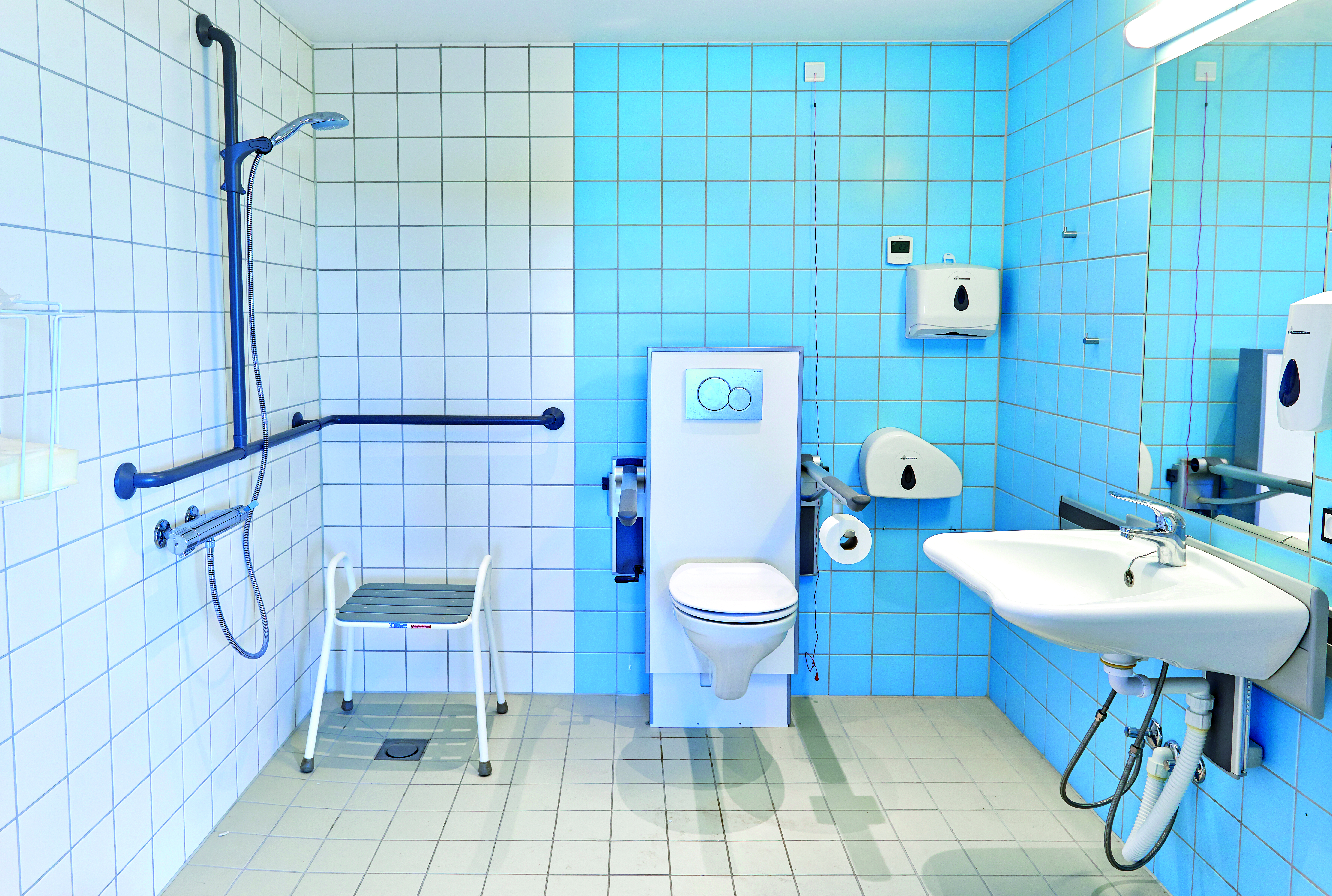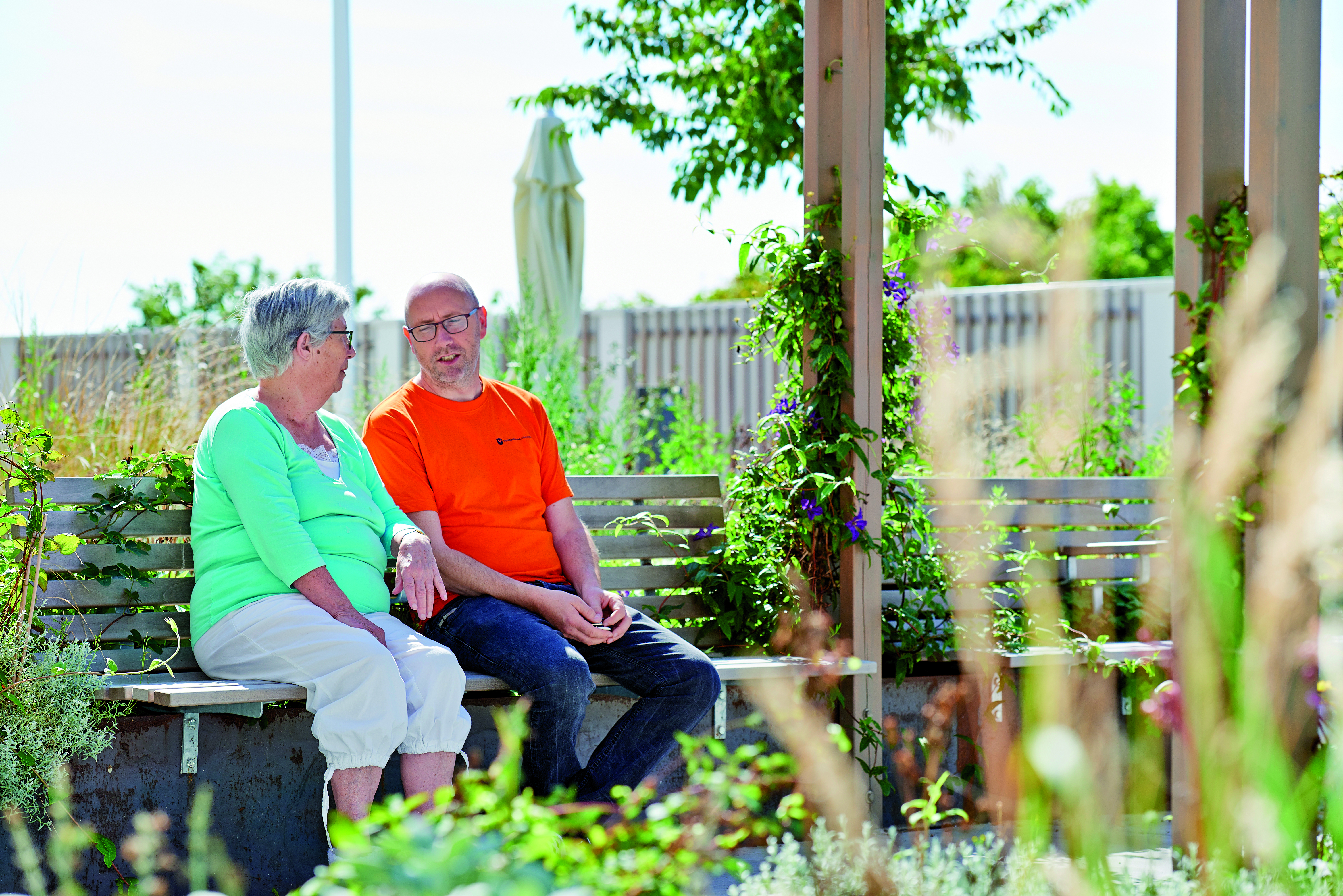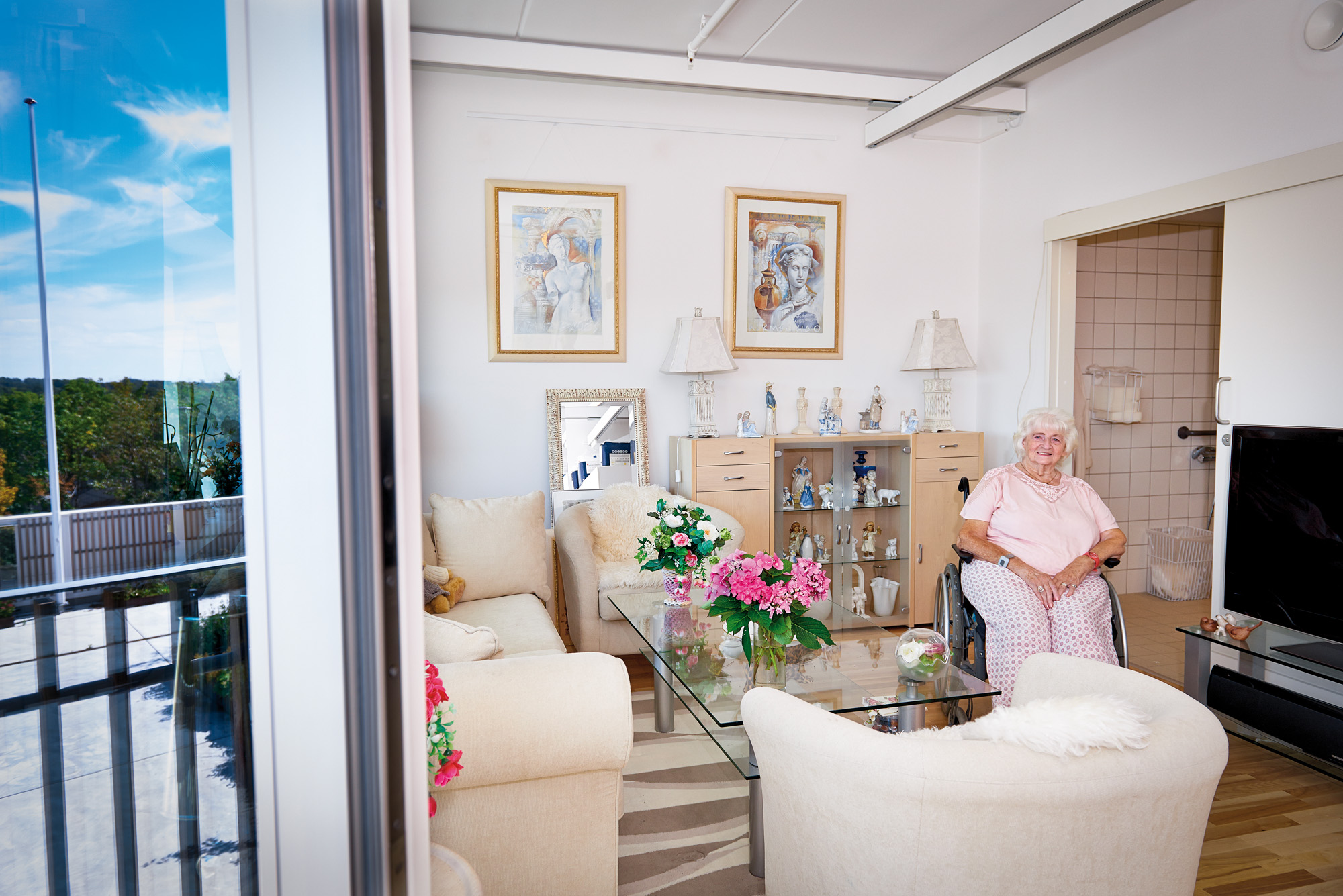Albertshøj Care Home
The preparation of Albertslund Municipality’s new Albertshøj care home has been a thorough process. A task group consisting of employees, management, the municipality, JJW Arkitekter and Pressalit Care has turned the many needs and requirements identified into bathrooms for the 108 residences.




Fact box
- Albertshøj is situated in central Albertslund and opened in 2016
- Care home (9,180 m²) with 108 residences, service areas, a supermarket (3,700 m²) and health centre (2,500 m²). The 108 residences are 81 care units, 15 sheltered housing units and 12 rehabilitation units
- The building and the culture of the care home are based on shared values that help residents live life on their own terms, with the care and support they need
- The size of a standard residence is 77 m², which includes both the private home and a share of the communal areas, such as the dining room and lounge
- The bathrooms for the 108 residences are prefabricated and supplied as finished cubicles by ModulBad.
We paid attention to every detail
“We went to see other Pressalit solutions. When we visit companies and their showrooms, they tend to focus on the good aspects,” says care home manager Bjarne Webb. “Out in the real world, when you meet the users, the feedback is often a little more varied. Some things are good, others are bad. If we’re presented with something poor, it doesn’t necessarily mean that we say no. It just means that we need to be aware of it.
For example, experiences from other places encouraged us to request the extra long handrails – the ones that go around the corner in the shower. That’s what we got, and everyone is happy,” says Bjarne.
We tested the bathroom model first
Before construction began, a model of the bathroom was created to allow the task group and users to test the equipment and provide input for the design.
“And there was some great input. It was good to see and try things in a real setting, rather than end up with 108 bathrooms with a couple of details that would annoy us. Now we have a solution that works for us,” says Bjarne. “We came from a care home where the bathrooms were far too small, had old fittings and were highly inflexible. There’s no comparison with what we have now.”
Functionality and aesthetics
Both functionality and aesthetics went into creating the ideal bathroom. It was important that the bathroom be flexible, with a horizontally and vertically adjustable basin, height-adjustable toilet and the opportunity to personalise it.
“In terms of aesthetics, it was important to have colours and contrasts. Cognitively-challenged individuals will struggle to find their way around a room with no contrasts. That’s why we have two colours for the tiles, and the handrail in the shower is dark grey so that it clearly contrasts with the white tiles,” explains Bjarne.
From care culture to life-enhancing culture
- The transition from old care home to a brand new one has also encouraged management to work on its culture.
- “We want to achieve a life-enhancing culture rather than a care culture,” says Bjarne.
- “Even if this becomes your last home in life, it still needs to have substance, energy and quality of life. Life is for living, also in the latter years.”
The Challenge
- The bathroom must meet the functional capabilities of those requiring care and those who are independent
- There must be freedom of movement for one or two carers, so that they have plenty of space to work
- The bathroom must offer enough space for a turning circle
- It must be possible to use wheelchairs, shower chairs and rollators in the bathroom
- The bathroom must be as aesthetically pleasing and tidy as possible
The Solution
- Height-adjustable, manually operated toilet lifter and toilet supports
- Height- and sideways-adjustable basin
- Extra long handrails in the shower area for extra support
- Flexible bathroom solution to provide optimum conditions for carers and residents
The Effect
- A bathroom that a resident can add their own personal touch to
- Colours and contrasts that make it easier for visually or cognitively impaired residents to move around
- Enough space for staff, space for one or two carers
















